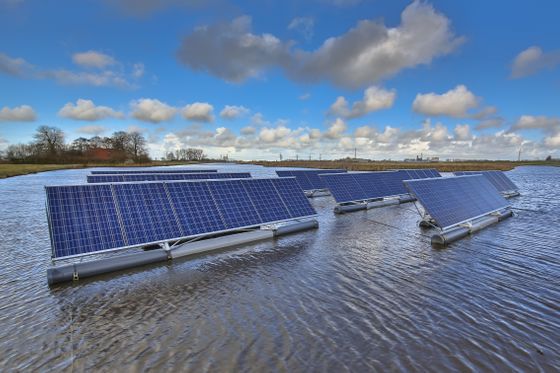The idea of building an artificial island that produces methanol from carbon dioxide and seawater as a measure against global warming

by
Carbon dioxide is considered to be the leading cause of global warming, but human beings live on fossil fuels that emit carbon dioxide such as oil. The idea of building on the ocean a ' populated island ' that can generate methanol, which is an alternative to fossil fuel, while reducing such carbon dioxide, has been announced at the US Academy of Sciences (PNAS) .
Renewable CO2 recycling and synthetic fuel production in a marine environment | PNAS
https://www.pnas.org/content/early/2019/05/28/1902335116
Creative thinking: Researchers propose solar methanol island using ocean CO2 | Ars Technica
https://arstechnica.com/science/2019/06/creative-thinking-researchers-propose-solar-methanol-island-using-ocean-co%e2%82%82/
The concept was announced by scientists' research groups specializing in materials science, physics, environmental physics, and marine science, working at the University of Zurich, Switzerland, and the Norwegian Institute of Science and Technology. The announced concept is to construct a circular 'artificial island' with a diameter of 100 meters that functions as a factory on the ocean. The artificial island is equipped with solar panels and generates 24,000 kilowatts of electricity per hour during the day. The generated power is stored in a battery and used for the continuous production of methanol day and night.

By
For the production of methanol, hydrogen generated by electrolyzing seawater and excess carbon dioxide present in seawater are extracted and used. First, remove the sodium chloride (salt) from the seawater, desalinate the seawater, separate the desalted aqueous solution into an acidic solution and a basic solution, and extract carbon dioxide from the acidic aqueous solution. After that, it mixes the acid solution and the basic solution again and then electrolyzes the aqueous solution to recover hydrogen.
The carbon dioxide thus obtained is hydrogenated by the catalyst to methanol. Since the final step of producing methanol from hydrogen and carbon dioxide is an endothermic reaction, heat energy is needed from the outside, but the heat generated in the process of producing carbon dioxide and hydrogen can be reused and made more efficient Possible. According to the plan, this artificial island can produce 15,300 tons of methanol a year, and the produced methanol will be transported to land by a transport ship.

By picturepartners
According to the research team's calculations, about 170,000 of these artificial islands are required to use methanol produced on artificial islands in place of fossil fuels used for long-distance transportation all over the world. While 170,000 sounds can be heard in tremendous numbers, there are 170,000 artificial islands in areas suitable for the construction of artificial islands where waves do not reach heights of about 2.1 meters and sufficient sunshine can be secured. It seems that you can build enough.
According to the research team, this concept is just a prototype, so the feasibility is the cost of the technology needed to build an artificial island, the cost of energy used for transportation, and the cleaning and maintenance needed to maintain the artificial island. According to the cost of Researchers say that there is still room for optimizing and optimizing the plan to produce another fuel instead of methanol, and the plan may change in the future.
Related Posts:
in Science, Posted by darkhorse_log







